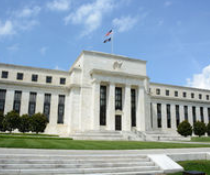 By Kevin Judge | October 25, 2018
By Kevin Judge | October 25, 2018
President Trump has publicly expressed the concern that the Federal Reserve is raising interest rates too much, too fast and that will harm the economy. He is not the first President to “jawbone” the Fed, but he is surely the first to accuse the Chairman of enjoying raising interest rates!
It has been a long held at conventional wisdom that when the economy is expanding too rapidly the Fed needs to step in and slow it down. As the late Fed Chairman William McChesney Martin famously said, the Fed’s job was “to take away the punch bowl just as the party gets going.” This view is based on the belief that when an economy gets overheated it causes a shortage of resources both material and human that causes rising prices, a.k.a. inflation. In recent years a contrarian view has emerged that does not see rapid economic growth as causing these problems.
The increasingly interconnected Global Marketplace and advances in technology have kept resource costs low and maintain high productivity. In fact, inflation has not been a serious problem has not been a serious problem in the United States since early in the Reagan Administration in the 1980s. Nevertheless, preventing excessive inflation has been a priority since prices spiraled out of control in the 1970’s. This was a period where we had the unusual coincidence of high inflation and high unemployment, something the famed Phillips Curve did not predict being possible. They called it Staglation.
The prescription for inflation has been high interest rates and a restrictive monetary policy. While this has been known to work, it can work too well and trigger an economic downturn if the Fed is not careful. The Fed’s response to the financial crisis of 2007-08 was the exact opposite, gunning the money supply and historically low interest rates. Chairman Ben Bernanke was a student of history and the Great Depression which he believes was caused primarily by an unnecessary contraction of the money supply in the 1930’s
You would have expected this policy to be gradually reversed by now. After all, the recession technically ended in June 2009. Unfortunately, the expansion was sluggish with numerous back-steps. Only now is the nation’s central bank seriously working at unwinding a policy that resulted in it building an unprecedentedly large portfolio of debt assets.
The Feds primary way to impact interest rates and the money supply is to buy and sell bonds, government and mortgage backed. Buying bonds pits more money into circulation and drives interest rates down. Since August 2007, the Federal Reserve’s total assets have increased significantly to well over $2 trillion.
Selling bonds has the opposite effect, reducing the money supply and raising rates. This depresses economic activity, hence the concern by President Trump. The booming economy has been his crowning achievement to date. While Mr. Trump is right to have concerns, delaying inevitable tightening can also have consequences.
The Achilles heel in the Trump and Republican policies has been Government spending and the resultant red ink. Liberals are blaming rising deficits that need to be financed with debt to last year’s historic tax cuts bill. The reality is that lower rates have spurred economic growth and produced historic revenues into the Treasury. The cause of the red ink was a bipartisan agreement to set aside spending limits established in 2012, known as sequestration. Sequestration succeeded in reducing the massive Obama budget deficits, but both parties were eager to repeal it.
Just about the only thing Democrats and Republican have been able to agree this year is a massive increase in spending. Democrats wanted more money for social programs and Republicans wanted more money for defense.
Democrats have no plan to deal with a looming debt crisis. Republicans have maintained that increasing economic growth will provide more revenue and make it easier to deal with the debt. They are partly right, but without fiscal constraint spending is dwarfing the increase in tax revenue. An important lesson I learned many years ago is that for your household budget no amount of increased income will solve a spending problem. In fact, it tends to exacerbate it. Without spending discipline, the more money you have the more money you will spend and the more debt you accrue.
It is true in your family budget and doubly true with our government budget. At some point, the interest on debt becomes unaffordable. The great question of our immediate economic future is whether the Fed can normalize interest rates without making the cost of borrowing too high for the Federal government too afford.
Unfortunately, our politicians and the media mostly oblivious to the issue. Waiting until action cannot avoided may have dire consequences.
